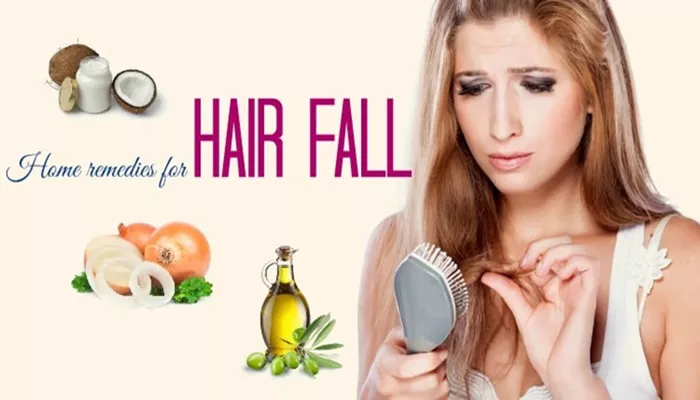Hair loss is a common problem that affects millions of people worldwide. Whether you’re noticing a few extra strands in your brush or significant thinning, losing hair can be stressful. The good news is that there are many remedies available to address this issue. However, the “best” remedy depends on the cause of your hair loss, your lifestyle, and your commitment to treatment.
In this article, we’ll explore the most effective solutions for falling hair, from natural treatments to medical interventions. Let’s dive in.
Understanding Why Hair Falls Out
Before discussing remedies, it’s important to understand why hair falls out. Hair loss can happen for many reasons, including:
Genetics: Hereditary hair loss (androgenetic alopecia) is the most common cause. It affects both men and women and is linked to hormones and family history.
Hormonal Changes: Pregnancy, menopause, thyroid issues, or conditions like PCOS can trigger hair thinning.
Stress: Physical or emotional stress can push hair follicles into a “resting phase,” leading to sudden shedding (telogen effluvium).
Nutritional Deficiencies: Lack of iron, protein, vitamins (like B12 or D), or minerals (like zinc) weakens hair.
Medical Conditions: Scalp infections, autoimmune diseases (e.g., alopecia areata), or chronic illnesses (e.g., diabetes) may cause hair loss.
Hair Care Habits: Over-styling, harsh chemicals, tight hairstyles, or heat tools can damage hair follicles.
Identifying the root cause is the first step toward choosing the right remedy.
Natural Remedies for Hair Loss
Many people prefer starting with natural solutions. These methods are gentle, affordable, and often free of side effects.
Scalp Massage
Massaging your scalp boosts blood flow to hair follicles, delivering oxygen and nutrients. Use your fingertips (not nails) to press in circular motions for 5–10 minutes daily. For better results, try massaging with warm coconut or olive oil.
Essential Oils
Certain oils stimulate hair growth:
- Rosemary Oil: Studies show it works as effectively as minoxidil (a common hair growth drug) for some people. Mix 2–3 drops with a carrier oil (like jojoba) and apply to the scalp.
- Peppermint Oil: Creates a tingling sensation that increases circulation. Dilute before use.
- Lavender Oil: Promotes relaxation and reduces inflammation.
Apply oils 1–2 times weekly, leave on for 30 minutes, then wash out.
Aloe Vera
Aloe vera soothes the scalp, reduces dandruff, and unclogs follicles. Apply fresh aloe gel directly to the scalp, leave for 30 minutes, then rinse.
Balanced Diet
What you eat directly impacts hair health. Focus on:
- Protein: Hair is made of keratin, a protein. Eat eggs, fish, beans, or Greek yogurt.
- Iron: Found in spinach, lentils, and red meat. Iron deficiency is linked to hair loss.
- Vitamins: Biotin (eggs, nuts), Vitamin D (sunlight, fatty fish), and Zinc (pumpkin seeds, shellfish) support growth.
Herbal Supplements
- Saw Palmetto: Blocks DHT, a hormone linked to genetic hair loss.
- Ginseng: Boosts scalp health and reduces stress.
- Green Tea Extract: Rich in antioxidants that protect hair follicles.
Always consult a doctor before taking supplements.
Medical Treatments for Hair Loss
If natural remedies don’t work, medical treatments offer stronger solutions.
Minoxidil (Rogaine)
This over-the-counter topical solution is FDA-approved for hair regrowth. It works by prolonging the hair growth phase. Apply it twice daily to the scalp. Results take 4–6 months. Side effects may include scalp irritation.
Finasteride (Propecia)
A prescription pill for men, finasteride blocks DHT. It’s effective for genetic baldness but not recommended for women (especially pregnant women). Results appear in 6–12 months.
Platelet-Rich Plasma (PRP) Therapy
PRP involves injecting your own blood platelets into the scalp to stimulate growth. It’s pricey but works well for early-stage hair loss. Multiple sessions are needed.
Corticosteroid Injections
Used for alopecia areata, these injections reduce inflammation and restart hair growth.
Hair Transplant Surgery
This surgical option moves hair follicles from dense areas (like the back of the head) to thinning spots. Results are permanent but costly.
Lifestyle Changes to Prevent Hair Loss
Small daily habits can make a big difference:
- Reduce Stress: Try yoga, meditation, or deep breathing to lower cortisol levels.
- Avoid Tight Hairstyles: Ponytails or braids can pull hair out over time.
- Limit Heat and Chemicals: Let hair air-dry, and avoid bleach or perms.
- Quit Smoking: Smoking reduces blood flow to the scalp.
- Stay Hydrated: Dehydration makes hair brittle.
Professional Treatments
Salons and clinics offer advanced options:
- Low-Level Laser Therapy (LLLT): Devices like laser combs or caps stimulate follicles.
- Scalp Micropigmentation: Tattooing tiny dots on the scalp mimics the look of hair follicles.
- Customized Hair Care: Professionals can recommend shampoos or serums tailored to your scalp type.
Alternative Therapies
Some people explore unconventional methods:
- Acupuncture: Improves blood flow and reduces stress.
- Aromatherapy: Using essential oils in diffusers for relaxation.
- Onion Juice: High in sulfur, it may boost collagen production. Apply juice to the scalp for 15 minutes before washing.
Prevention Tips
- Wash hair gently with sulfate-free shampoo.
- Trim split ends regularly.
- Protect hair from sun and pollution with hats or scarves.
When to See a Doctor
Consult a dermatologist if:
- Hair loss is sudden or patchy.
- You have itching, pain, or redness.
- Home remedies aren’t working.
Conclusion
There’s no single “best” remedy for hair loss—it depends on your unique situation. Start with natural methods and lifestyle changes. If those fail, explore medical or professional treatments. Be patient; hair regrowth takes time. Most importantly, address the root cause, whether it’s stress, diet, or genetics. With consistency and the right approach, you can reduce hair fall and regain confidence.
Related topics:
21 Best Hair Products for Natural Hair In 2025
What Is the Best Homeopathic Medicine for Hair Fall?
Scalp Oiling: A Step-by-Step Guide


